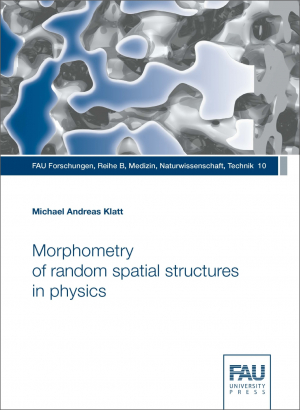Michael Andreas Klatt
Morphometry of random spatial structures in physics
Medizin, Naturwissenschaften, Technik
Reihe: FAU Forschungen : Reihe BFrom the large-scale structure of the universe to exotic states in nuclear matter: random or disordered spatial structures appear on nearly all length scales in very different physical, chemical, or biological systems. In systems with complex structure, there is often a close interconnection of physics and geometry, and physical insight is often best achieved by a rigorous characterization of the structure. This thesis demonstrates how a family of integral geometric shape descriptors, the so-called Minkowski functionals and tensors, provide an intuitive and versatile morphometric analysis. It sensitively and comprehensively describes the geometry in diverse systems on radically different length scales.
The morphometric analysis is refined and applied to mathematical models and simulations of physical systems as well as experimental data sets. For example, the structures appearing in models from stochastic geometry are examined with a particular emphasis on anisotropy. In one of these models, the Minkowski functionals help to better understand and predict a geometrical phase transition. Moreover, a structural characterization across length scales of a physical model, which consists of hard particles, reveals how systems with similar local configurations can nevertheless exhibit a distinctly different global structure. On extremely small length scales, the Minkowski functionals help to characterize complex shapes of exotic states of nuclear matter. Among a variety of these spontaneously forming so-called pasta shapes, a gyroid network is identified, which was, e.g., already found in the wing scales of a butterfly. In a morphometric data analysis, the Minkowski functionals quantify the shape of noise in sky maps from gamma-ray astronomy. Thus, additional geometric information can be extracted from the data without prior assumptions about potential sources. The latter can then be detected by a significant deviation of the structure of the observed sky map from the shape of the background noise. By an enhanced characterization of this background structure, formerly undetected sources can eventually be detected in the same data.
The Minkowski functionals and tensors allow for a better understanding of quite different mathematical models and physical systems as well as a sensitive analysis of experimental observations. Thereby, this morphometric analysis relates seemingly unrelated fields of research.
